Brachycephalic pets

Thanks to animal health initiatives such as the Australian Veterinary Association and RSPCA’s Love is Blind campaign, pet owners are becoming more aware of the term 'brachycephalic' and what it can mean for their pet.
What does brachycephalic mean?
Brachycephalic animals have been bred to have a shorter, rounder head and face – in fact, they are often referred to as being 'snub-nosed' or 'squishy-faced'. They frequently suffer health and welfare problems as a result of their unnatural conformation. Brachycephalic dog breeds include the French bulldog, Pug, English bulldog, Boston terrier, and some cavalier King Charles spaniels; while brachycephalic cat breeds include the Persian and exotic shorthair.
Why do people choose brachycephalic pets?
People tend to choose brachycephalic pets for both looks and temperament. These animals are frequently very people-oriented, gentle and loving, making wonderful companions. In addition, people are attracted to their large eyes, expressive faces and almost 'babyish' looks - with many owners in search of a 'fur-baby', brachycephalic pets can seem like the perfect pet.
What health issues can brachycephalic pets suffer from?
Unfortunately, years of intensive breeding for such exaggerated physical features have resulted in multiple common serious health issues in brachycephalic animals.
The most obvious issues are those relating to the abnormal airway anatomy of brachycephalic animals. This is because normal nose, throat and airway structures are compressed into a much smaller space, resulting in a combination of health problems, often referred to as Brachycephalic Obstructive Airway Syndrome (BOAS).
BOAS is caused by:
- Narrow nostrils
- An oversized tongue relative to the space in the mouth cavity
- Excessive folds of tissue in the throat; and
- A narrow trachea (windpipe)
BOAS causes symptoms such as snoring, laboured breathing, sleep disturbance, reduced ability to pant effectively and sometimes fainting. As a result, brachycephalic pets are at a much higher risk of breathing difficulties and heat stress. This is a serious risk especially in the summer months in Australia.
Unfortunately, symptoms of BOAS worsen as a pet gets older due to constant stress on the narrow airways, causing swelling and damage. This means that much-loved pets can suddenly develop severe and life-threatening breathing difficulties in hot weather or if they’re under stress, requiring emergency treatment to hopefully save their lives.
Unfortunately, brachycephalics also commonly suffer from other health issues related to their abnormal anatomy, including:
- Eye ulcers and damage due to more prominent eyes and shallow eye sockets
- Skin infections due to skin folds around the face and tail
- Dental disease due to abnormal tooth and jaw positioning
- Spinal disease, pain and paralysis due to malformed bones in the spine
- Intermittent regurgitation or vomiting due to abnormal stomach position and increased effort to breathe
- A high chance of birthing difficulties requiring caesarean section
All of these abnormalities can result in the need for expensive surgeries and treatments, just to help these breeds live a more comfortable life.
Information for prospective owners of brachycephalic pets
The AVA and RSPCA developed a fact sheet for people who are considering buying a brachycephalic dog breed. It asks potential owners to stop and consider the health and welfare problems that these breeds experience, and consider other options, such as adopting another type of breed or a crossbred dog. The fact sheet can be read here.
How can we help brachycephalic pets?
There is also a fact sheet for current owners, so they know what to look for and what can be done to help their animal. It is recommended that all brachycephalic pets have their airways assessed at around six months of age. This generally involves a throat examination under general anaesthetic, and x-rays of the chest.
Whilst BOAS cannot be “fixed”, specialist surgeries can be done between six and twelve months of age to reduce some symptoms and improve your pet’s overall quality of life. This surgery generally costs between $4-10K, depending on the severity of the disease in your pet and any complications, making it a significant financial commitment.
It is strongly suggested to take out pet insurance on your brachycephalic pet as early as possible, to help you manage any unexpected health issues that may occur. Be aware that some of their conditions may not be covered, as they are known breed complications that occur as a result of their exaggerated features.
Whilst brachycephalic pets can be very appealing, veterinarians encourage owners to think carefully before purchasing one. These pets are more likely to suffer long-term health issues that will require regular vet assessment and treatment to improve their comfort and quality of life. Sometimes their health conditions can be life threatening or can reduce their life spans, which can be heart-breaking for owners and families. More information can be found on the Love is Blind campaign page here: Love is Blind – AVA - RSPCA.
